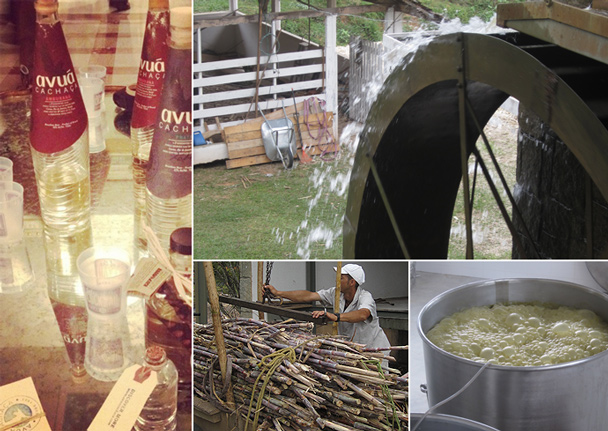As host of the 2014 FIFA World Cup and the 2016 Summer Olympics, Brazil is gearing up for its moment in the international spotlight. That doesn't mean the global community, and America in particular, isn't already enamored with Brazilian culture. Consider its list of exports: samba, bossa nova, Pelé, capoeira, Brazilian jiu jitsu, Gui Boratto, churrascarias, and even supermodel Gisele Bündchen. Then there's the fact that in 2012 more than one million people flocked to Rio de Janeiro for its legendary Carnaval, with 32 percent of those visitors coming from outside Brazil. It's time for South America's largest and most populous country to shine.
Cachaça, Brazil's sugarcane-based spirit, has been quietly spreading its liquid goodwill as the main ingredient in Caipirinhas, but we think it's primed to become Brazil's best ambassador yet. Earlier this year the United States began the process to recognize cachaça as a distinctive liquor, rather than simply labeling it "Brazilian rum," and exporters are hopeful this bit of international relations will increase sales to match the growing demand. Just this spring, multinational beverage company Diageo bought Ypióca, Brazil's third-largest cachaça brand. But the exportation of its national spirit isn't limited to big brands. In early 2013, the Carmo, Rio de Janeiro state–based Avuá will launch its line of small-batch (less than 20,000 liters per year), single-sourced cachaça, made by Katia Espírito Santo, one of Brazil's few female distillers.
For the story behind Avuá, plus advice on shopping for, cooking with, and perhaps most important, drinking cachaça, we spoke to Avuá cofounder Nate Whitehouse. A lawyer and self-proclaimed "serial entrepreneur," Whitehouse had no professional experience in the spirits world when a fortuitous taste of cachaça led he and his partners, also liquor-industry novices, to visit and fall in love with Brazil, and ultimately to found Avuá.
Gourmet Live: What does Avuá mean, and what is the story behind the company?
Nate Whitehouse: Avuá comes from the Portuguese word voar, which means to fly. [The company] was started by three friends, Pete Nevenglosky, Mark Christou, and myself. During a storm in early winter 2009, a friend from Rio invited us to join her at Miss Favela, a botequim—a Brazilian bar—in Williamsburg, Brooklyn. We trudged through the snow to this ramshackle wooden structure. The door opened onto a lively scene of happy Brazilians and people from all over the world, dancing samba, drinking Caipirinhas and Brazilian beers, and eating grilled meats and feijoada, a traditional Brazilian stew. A bartender had us taste an artisanal cachaça, and we all looked at one another and thought, What a thrill.
We decided that we needed to explore more of Brazil, and took some time to visit some of the farms and distilleries in the states of Minas Gerais, Rio de Janeiro, and São Paulo. The core artisanal cachaça-producing region is in the interior state of Minas Gerais. It's known for experimenting with aging in different kinds of woods and the attention to production methods. In addition, the area near Rio named Paraty is a famous artisanal cachaça-producing region. However, all across Brazil there are small farms producing unique cachaças, including São Paulo state.
We were introduced to a Brazilian mixologist, André Cerqueira. Without knowing us at all, he generously drove us to 30 different cachaça producers. During this drive we met Katia Espírito Santo, Avuá's master distiller. We fell in love with her warmth and sincerity, as well as the quality of her spirit. We sat in a café and hatched the idea of bringing a handmade artisanal cachaça to the U.S. with a brand that really expressed what was unique about Brazil—the thrill of discovering new adventures, and the warmth and elegance of the people. Everything just kind of evolved from there.
GL: Avuá is a single-sourced cachaça. Where does the sugarcane come from?
NW: All of Avuá's sugarcane is grown by Katia on Fazenda da Quinta, a farm in Carmo, about four hours north of Rio de Janeiro. The farm was purchased by her grandfather, Francisco Alves, in 1923, and Francisco passed his passion for cachaça distillation to his son, José Ramos Alves. José Alves produced cachaça through the early part of the 21st century, before passing the production to his oldest daughter, Katia, who was born on the farm and really made Fazenda da Quinta what it is today.



 Pinterest
Pinterest


